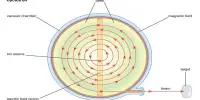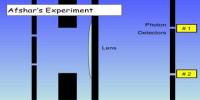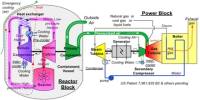Silicon
Definition
Silicon is a metalloid element that occurs in both gray crystalline and brown noncrystalline forms. It is the second most abundant element in the Earth’s crust and can be found only in silica and silicates. Its atomic number 14; atomic weight 28.086; melting point 1,410°C; boiling point 2,355°C; specific gravity 2.33; valence 4.
![]()
It is not very reactive, although more reactive than carbon, and has great chemical affinity for oxygen; it was first purified and characterized in 1823 by Jöns Jakob Berzelius. It is the second most abundant element in the Earth’s crust and can be found only in silica and silicates. Silicon is used in glass, semiconductors, concrete, and ceramics.
It is most widely distributed in dusts, sands, planetoids, and planets as various forms of silicon dioxide (silica) or silicates. Over 90% of the Earth’s crust is composed of silicate minerals, making silicon the second most abundant element in the Earth’s crust (about 28% by mass) after oxygen.
Elements, Production and Properties of Silicon
Silicon was was first identified by Antoine Lavoisier in 1787. Humphry Davy thought in 1800 that silica is an element, not a compound, and in 1808 suggested the present name. Re discovered by Jons Berzelius in 1823. Silicon resembles Carbon in many respects. It can be obtained in several allotropic forms, corresponding to those of carbon. The crystallized form is very hard, and is inactive toward reagents. The amorphous variety has, in general, properties more similar to charcoal.
![]()
Silicon makes up 27.7% of the Earth’s crust by mass and is the second most abundant element (oxygen is the first). It does not occur uncombined in nature but occurs chiefly as the oxide (silica) and as silicates. The oxide includes sand, quartz, rock crystal, amethyst, agate, flint and opal. The silicate form includes asbestos, granite, hornblende, feldspar, clay and mica. Elemental silicon is produced commercially by reducing sand with carbon in an electric furnace. High-purity silicon, for the electronics industry, is prepared by the thermal decomposition of ultra-pure trichlorosilane, followed by recrystallisation.
Elements can be classified based on their physical states (States of Matter) e.g. gas, solid or liquid. This element is a solid. Silicon is classified as a “Metalloid” element and is located in Groups 13, 14,15, 16 and 17 of the Periodic Table. An element classified as one of the Metalloids has the properties of both metals and Non-Metals. Some are semi-conductors and can carry an electrical charge making them useful in calculators and computers.
![]()
The Physical properties of Silicon are the characteristics that can be observed without changing the substance into another substance. Physical properties are usually those that can be observed using our senses such as color, luster, freezing point, boiling point, melting point, density, hardness and odor. Chemical properties are only observable during a chemical reaction. Reactions to substances may be brought about by changes brought about by burning, rusting, heating, exploding, tarnishing etc.
Application s of Silicon
Silicon is one of the most useful elements to mankind. Most is used to make alloys including aluminium-silicon and ferro-silicon (iron-silicon). These are used to make dynamo and transformer plates, engine blocks, cylinder heads and machine tools and to deoxidise steel.
![]()
Silicon is also used to make silicones. These are silicon-oxygen polymers with methyl groups attached. Silicone oil is a lubricant and is added to some cosmetics and hair conditioners. Silicone rubber is used as a waterproof sealant in bathrooms and around windows, pipes and roofs. The element silicon is used extensively as a semiconductor in solid-state devices in the computer and microelectronics industries. For this, hyperpure silicon is needed. The silicon is selectively doped with tiny amounts of boron, gallium, phosphorus or arsenic to control its electrical properties.
Reference:















